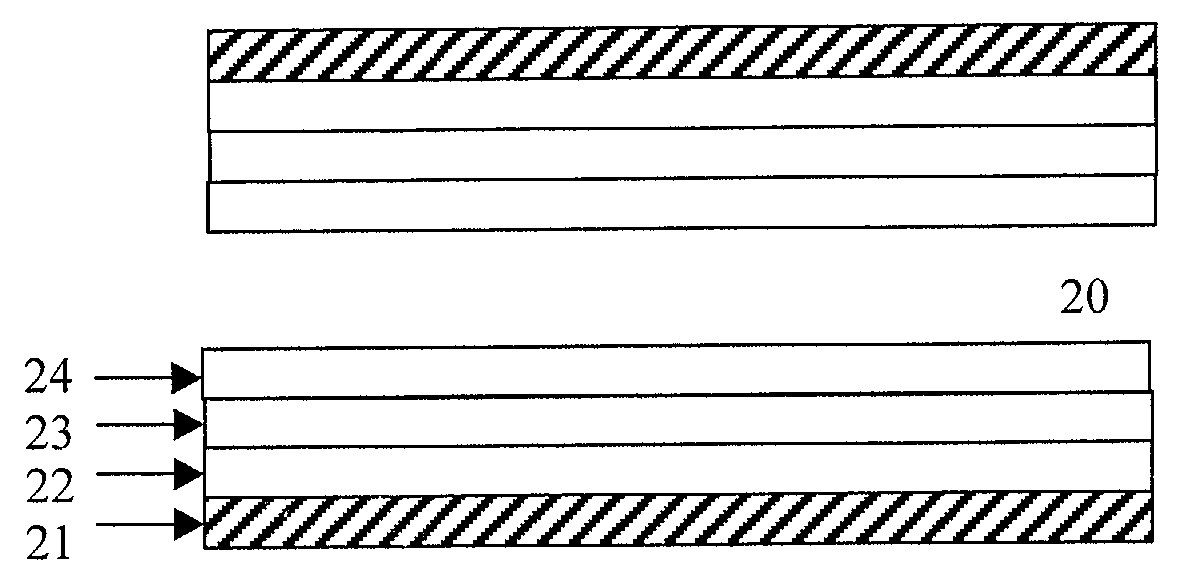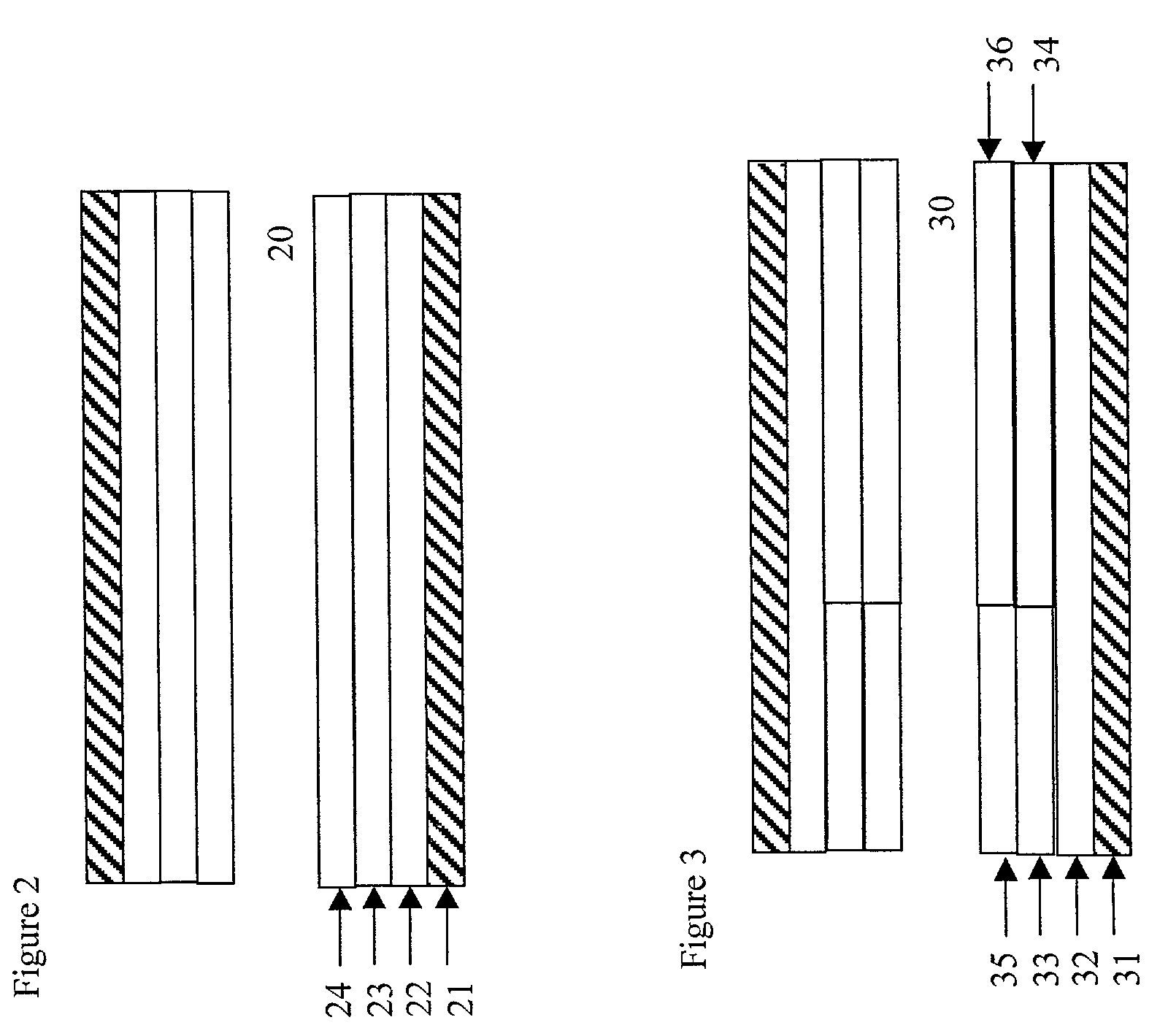Exhaust articles for internal combustion engines
a technology of exhaust articles and internal combustion engines, applied in the direction of catalyst activation/preparation, machines/engines, metal/metal-oxide/metal-hydroxide catalysts, etc., can solve the problems of reducing the efficiency of the catalytic converter, dampening out the normal air/fuel cycling used in engine controller strategies, and sacrificing the performance of the twc catalyst,
- Summary
- Abstract
- Description
- Claims
- Application Information
AI Technical Summary
Benefits of technology
Problems solved by technology
Method used
Image
Examples
example 1
Comparative Nonmethane Hydrocarbon and Nitrogen Oxide Abatement Performance
Exhaust System A
[0132]Exhaust system A contained two catalysts of the invention including a preferred multi-zoned layered catalyst (as seen in FIG. 3) having a base metal undercoat as a close-coupled catalyst and a preferred layered catalyst (also with a base metal undercoat) as a downstream underbody catalyst (as seen in FIG. 2).
[0133]The close coupled catalyst was prepared by coating an oval-shaped cordierite honeycomb carrier having a total volume of 55 in3 [dimensions 3.15 in (X)×4.75 (Y)×4.3 in (Z)] according to the methods described above. The upstream section of the carrier had a volume of 19.2 in3. The upstream section contained a formulation having a ratio of Pt / Pd / Rh of 1:20:1 with a total platinum group metal loading of 110 g / ft3. The first upstream zone (supported on the base metal undercoat) with a washcoat loading of 1.27 g / in3 contained platinum and palladium components. The second upstream zon...
example 2
Performance of a Multi-Zoned Layered Catalyst of the Invention with Differing Concentrations of Undercoat Oxygen Storage Component
[0140]Multi-zoned layered catalyst as described for the close-coupled catalyst of Exhaust System A of Example 1 were prepared. One catalyst A1 contained a base metal undercoat with a ceria-zirconia composite of 35% by weight ceria and a loading of 0.5 g / in3. A second catalyst A2 contained a base metal undercoat with a ceria-zirconia composite of 45% by weight ceria and a loading of 1.0 g / in3 (i.e., the ceria was increased by 80% in catalyst A2). After 50 k equivalent aging, the total hydrocarbon (THC) and NOx were evaluated using the FTP 1975 with a 4.6 L engine vehicle. The THC and NOx collected in each bag is displayed in Table 1.
[0141]
TABLE 1THCTHCNOxNOxA1A2A1A2Bag 10.160.1510.0710.074Bag 20.0120.0110.0030.002Bag 30.0260.0270.0230.045FTP0.0460.0440.0240.029
[0142]The data obtained for the two catalysts with different oxygen storage capacities in the und...
PUM
| Property | Measurement | Unit |
|---|---|---|
| diameter | aaaaa | aaaaa |
| specific surface area | aaaaa | aaaaa |
| particle size | aaaaa | aaaaa |
Abstract
Description
Claims
Application Information
 Login to View More
Login to View More - R&D
- Intellectual Property
- Life Sciences
- Materials
- Tech Scout
- Unparalleled Data Quality
- Higher Quality Content
- 60% Fewer Hallucinations
Browse by: Latest US Patents, China's latest patents, Technical Efficacy Thesaurus, Application Domain, Technology Topic, Popular Technical Reports.
© 2025 PatSnap. All rights reserved.Legal|Privacy policy|Modern Slavery Act Transparency Statement|Sitemap|About US| Contact US: help@patsnap.com



